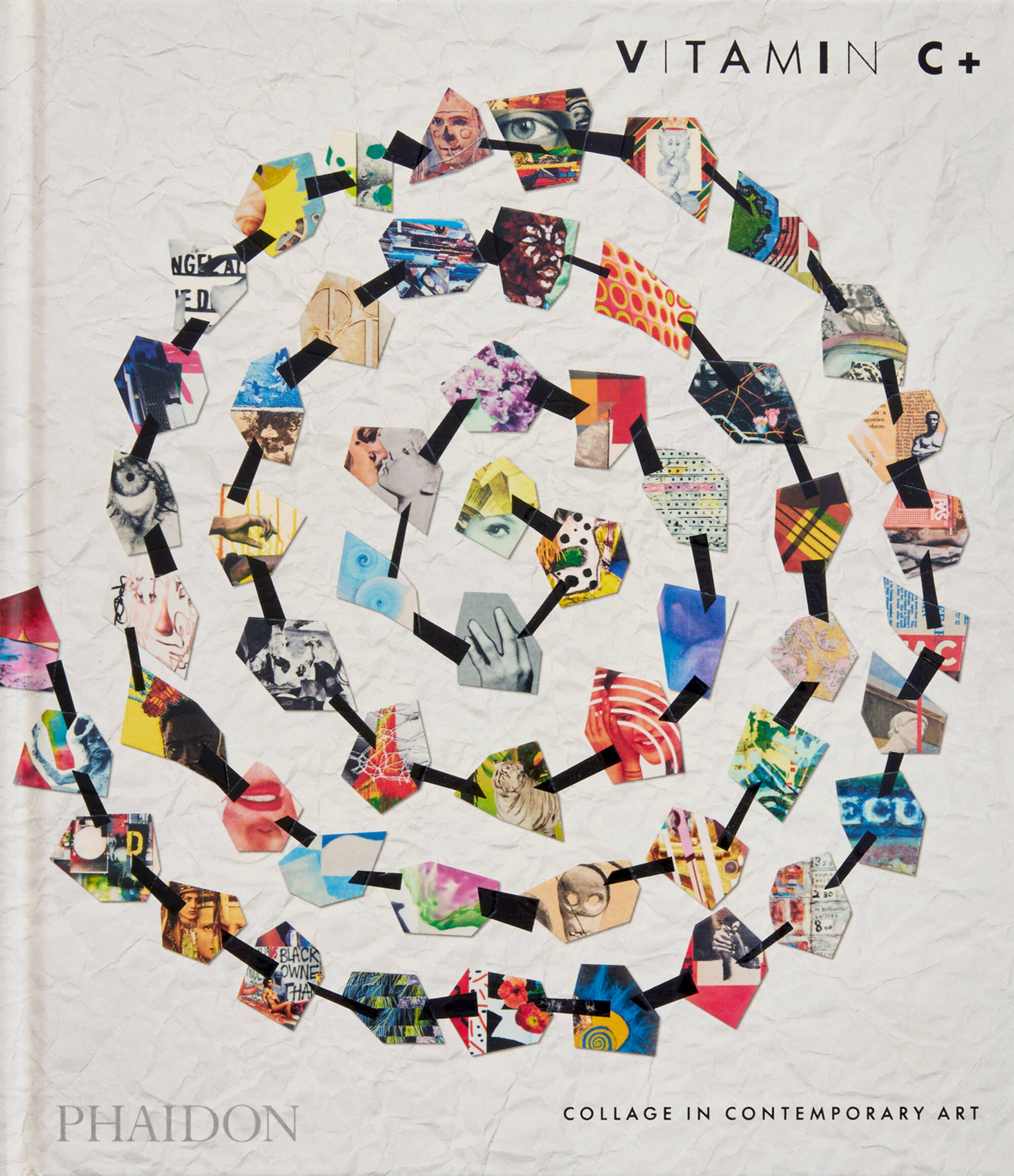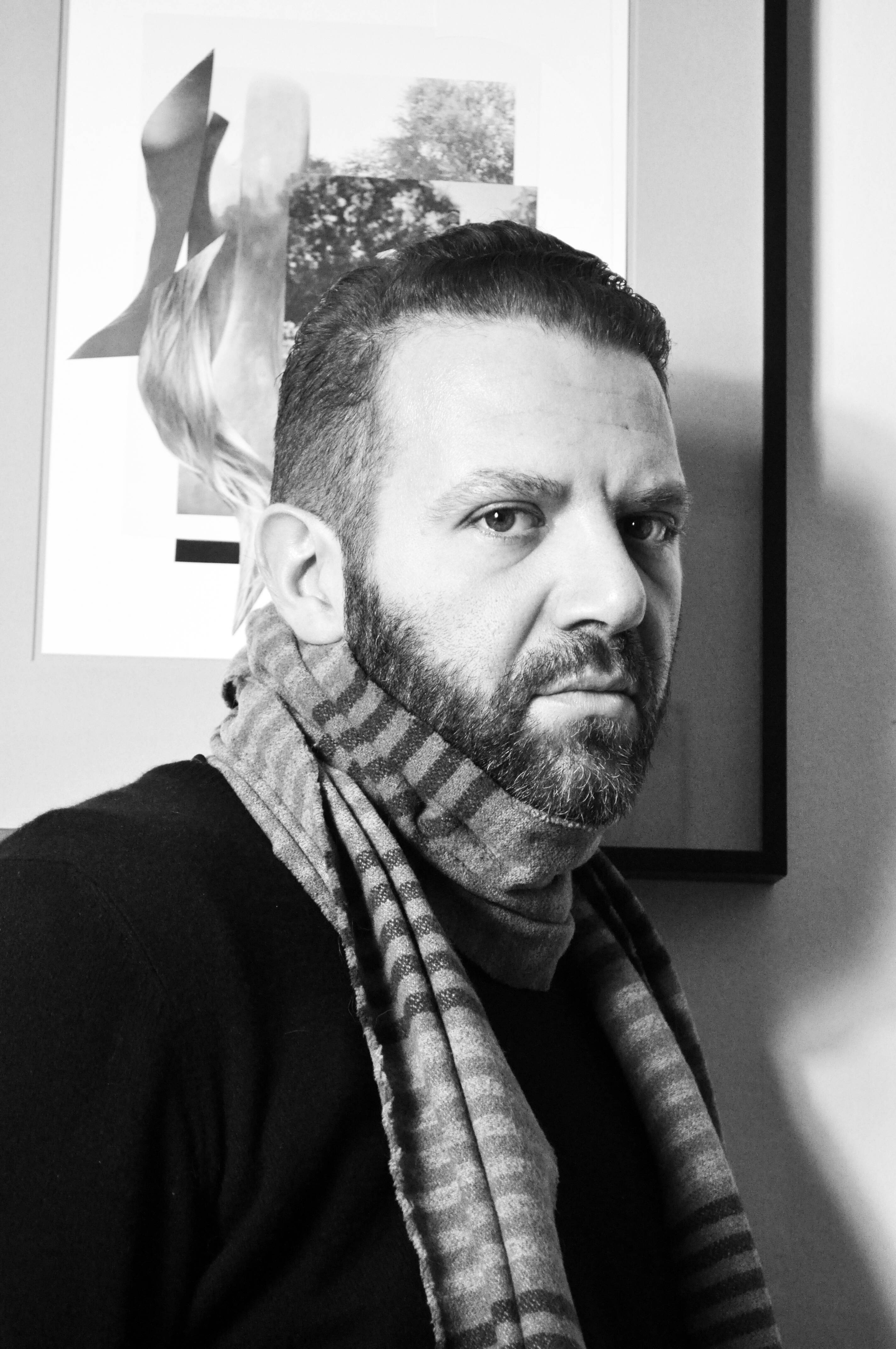
Simon Moretti - Why I Make Collage
'Collage allows us to quickly place things together and communicate a hidden message from the unconscious,' says the London-based artist featured in Vitamin C+
'Collage has become increasingly relevant in the way we interact with images on a daily basis' says London-based multi-disciplinary artist Simon Moretti, one of 108 artists included in Vitamin C+ Collage in Contemporary Art.
"When I mischievously appropriate an image from another image maker and include it as a fragment or in its entirety in a collage on paper, I am engaging in a kind of conversation with artists from different times. The conversation between the found images and objects in my studio and what they resonate in me is central to my work," the artist says in our phadon.com interview below.
Vitamin C+ Collage in Contemporary Art. showcases living artists who employ collage as a central part of their visual-art practice, as selected by 69 leading experts, including museum directors, curators, critics, and collectors. It features an engaging and informative introduction by Yuval Etgar, an internationally renowned expert in the area.
The definition is wide. Collage is an artistic language comprising found images, fragmentary forms, and unexpected juxtapositions. While it first gained status as high art in the early twentieth century, the past decade has seen a fresh explosion of artists using this dynamic and experimental approach to image making.
Using collage as his primary strategy since the early 2000s, Moretti’s work exposes links between knowledge, culture, memory and emotion.
In Untitled, 2015 for example, a photocopy reproduction of an Egyptian sculpture from the Eighteenth Dynasty is cut out to remove the figure’s wig – a symbol of her high social status – and replaced with a photo depicting the mechanism of a cathedral clock, an advert for watches from the Financial Times and a game of Sudoku.
"The resulting portrait is rich with associations including formal resemblances between the absent depiction of hair in the chiselled stone and the giant clock mechanism that replaces it, and conceptual ones concerning the notion of commemoration and the effect of passing, or lost, time," writes Yuval Etgar in Vitamin C+ Collage in Contemporary Art.
We asked Simon Moretti a few questions about what he likes about collage, the collagists from art history he admires, and why the medium is so important at the moment.
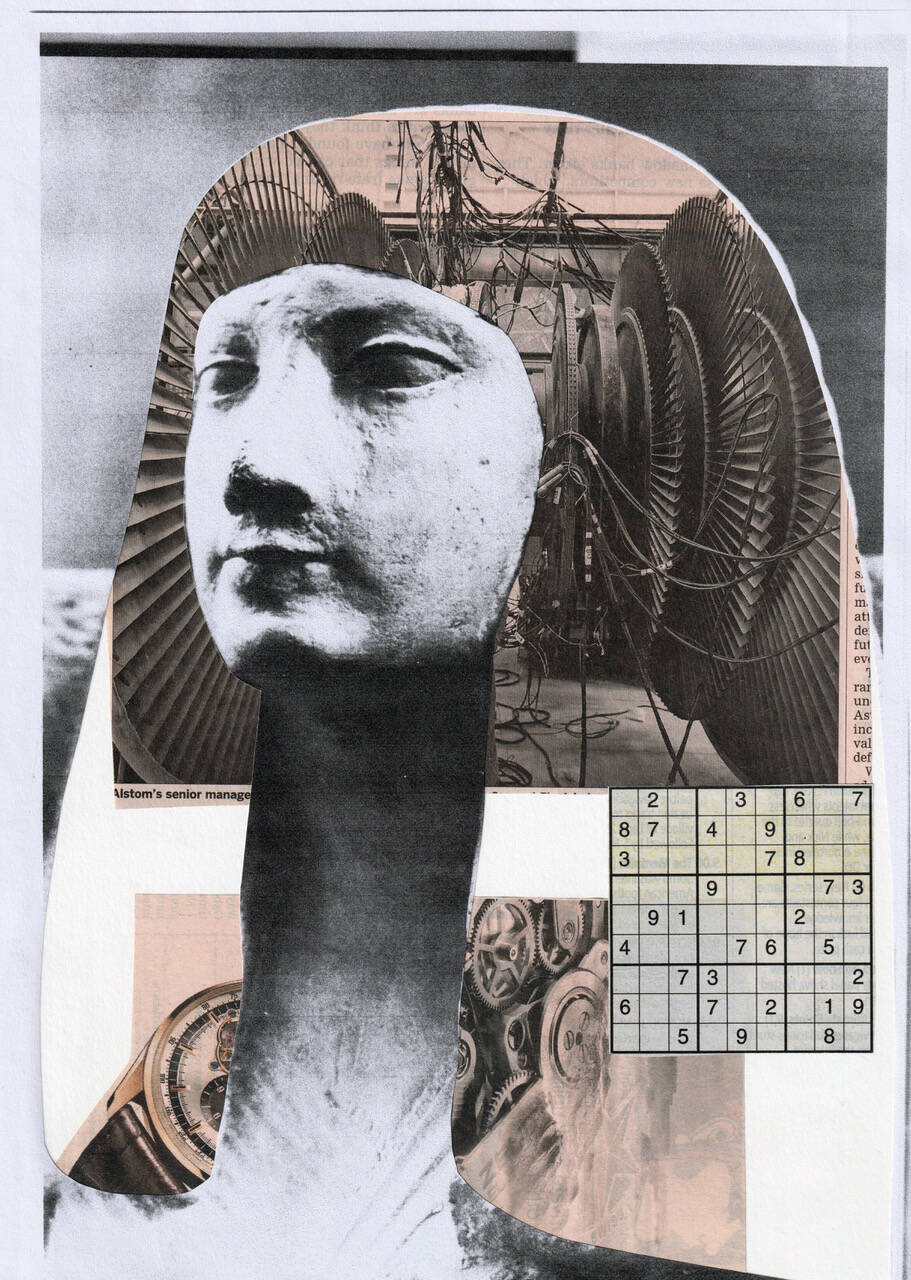
Untitled 2015 Collaged newsprint and photocopy © Simon Moretti All rights reserved, DACS/Artimage 2022
What’s on your mind right now? I have always been fascinated by the idea of flux and hybridity, and this has come to define me in many ways throughout my life.
Currently, I am focusing my attention on the concept of the muse in art history and poetry for an upcoming project. As part of my research, I have been examining Jean-Léon Gérôme's iconic painting Pygmalion and Galatea, ca. 1890 in the collection of MOMA in New York. The painting depicts the moment from Ovid's Metamorphoses when the sculpture of Galatea was brought to life by the goddess Venus in the artist's atelier. This timeless story of transformation has captivated me, and I am eager to explore its relevance in my own work.
What draws you to collage, what are the properties that excite or intrigue you? With my collages on paper and my installation and collaborative projects—which are a form of expanded collage—I am drawn to the immediate and often unmediated qualities of collage-making. My interest in psychoanalysis and the role of the unconscious within the creative process is constantly inspiring, as I believe collage allows us to quickly place things together and, in doing so, communicate a hidden message from the unconscious and present alternative systems of knowledge and language.
When I mischievously appropriate an image from another image maker and include it as a fragment or in its entirety in a collage on paper, I am engaging in a kind of conversation with artists from different times. The conversation between the found images and objects in my studio and what they resonate in me is central to my work.
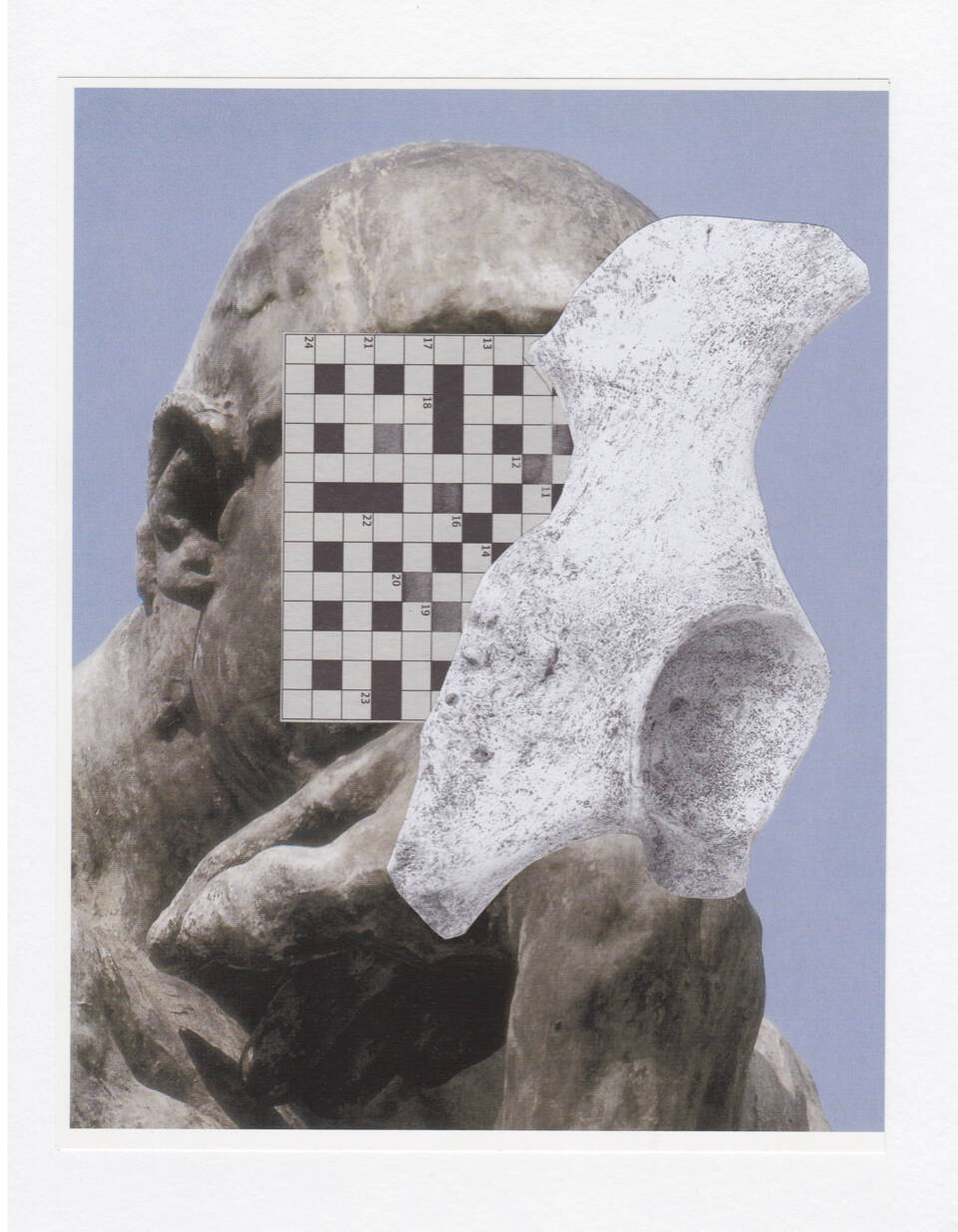 Untitled 2018 Collaged book page, newsprint and ink jet print © Simon Moretti All rights reserved, DACS/Artimage 2022
Untitled 2018 Collaged book page, newsprint and ink jet print © Simon Moretti All rights reserved, DACS/Artimage 2022
Andrew Durbin, a friend, writer, and poet, described my practice in a recent interview as "a collage practice more than a practice of collage," which I believe to be an apt description of my work, which has included various mediums such as found objects, photography, performance, text, neon, textiles, and more.
Freud's metaphor of the archaeological excavation in relation to psychoanalysis is also of great interest to me. I find collage to be an excellent way to bring to life mental images that may be hidden, yet lurking just below the surface. For Freud, psychoanalysis and archaeology both share the task of retrieving memories out of sedimented depths and incorporating these memories into the present through the act of excavation—which I find to be highly relevant to image-making, collecting material, and collage.
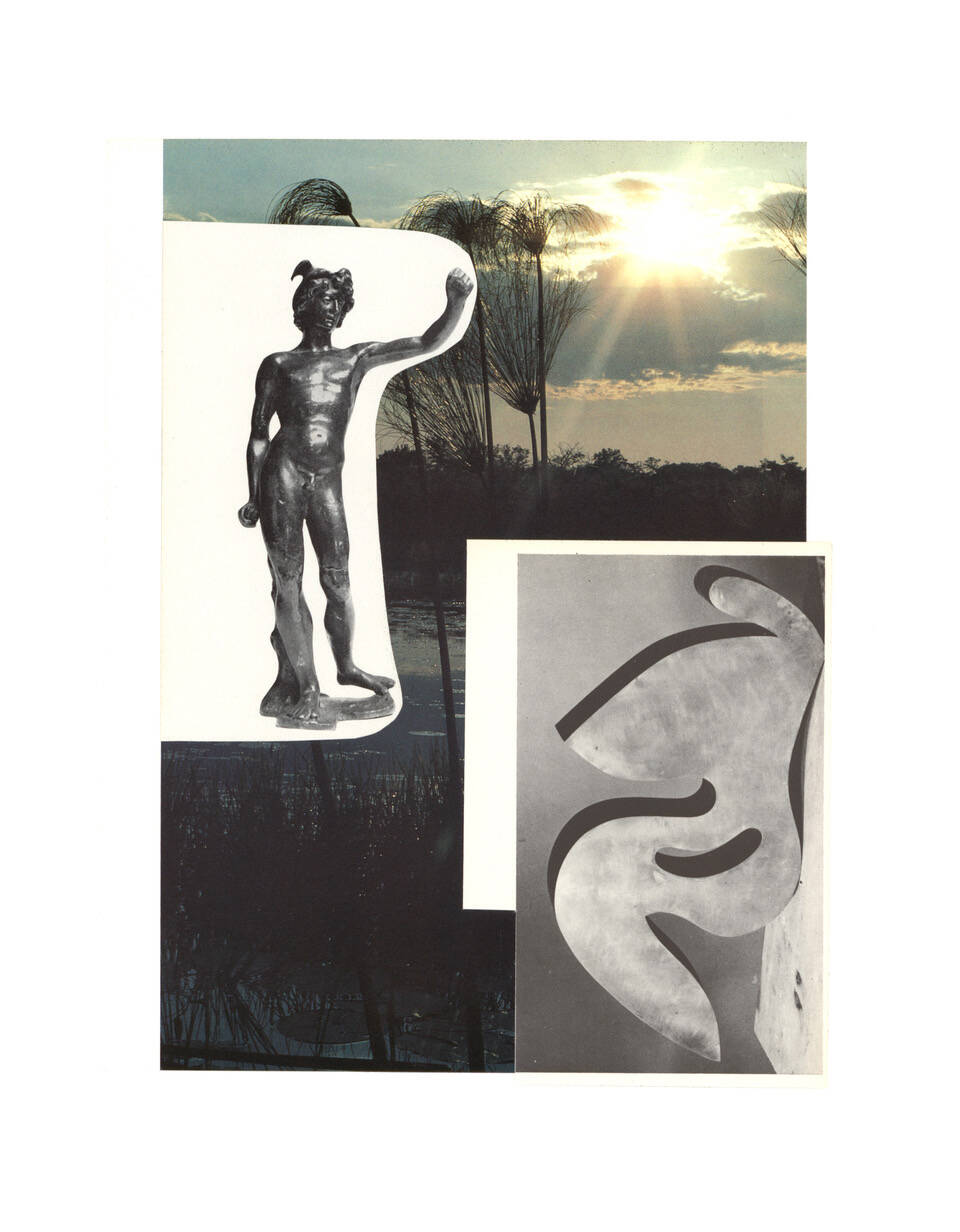 Untitled 2016 Collaged magazine page and book pages © Simon Moretti All rights reserved, DACS/Artimage 2022
Untitled 2016 Collaged magazine page and book pages © Simon Moretti All rights reserved, DACS/Artimage 2022
To the outsider, collage seems like the most freeing of mediums to work in, but is it? From my own experience, I definitely find that it offers a great deal of freedom in my creative process. Nevertheless, other artists might come to different conclusions, as everyone has their own unique perspective. For me, collage is a perfect way to express my ideas.
How improvisatory a medium is collage? Do you have a strict sense of what will happen before you start? Most of the time, I strive to be open to allowing the found materials in my studio to come together in an intuitive and automatic way, without any preconceived concept or image in mind. I am drawn to the unexpected combinations of disparate images that seem to have a mysterious magnetism, as if they were brought together under a spell. Through collage, I aim to disrupt pre-existing systems of knowledge, challenge fixed narratives, and create new symbolic connections, possibilities, and perspectives.
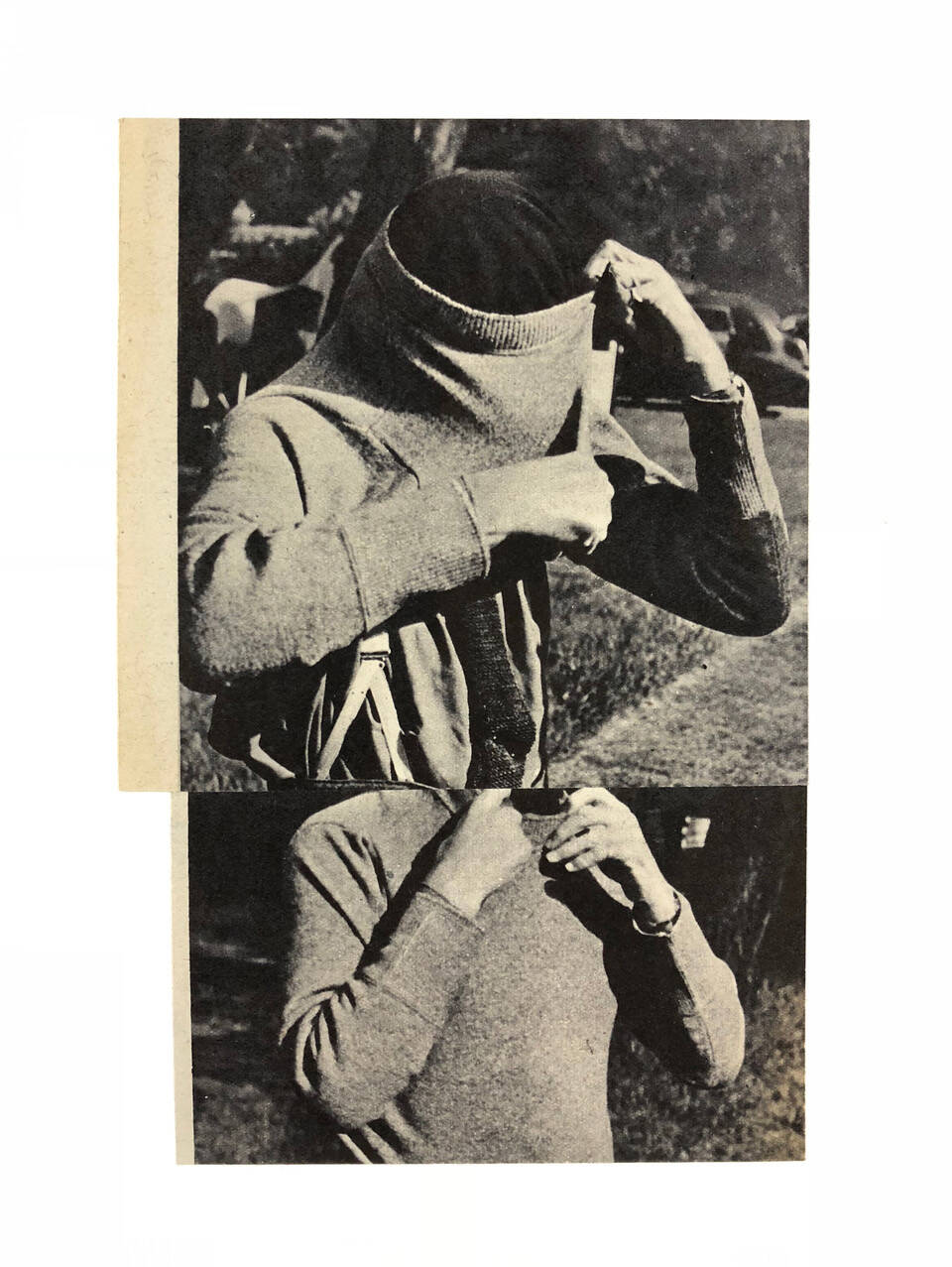 Untitled (HHR) 2018 Collaged WWII Picture Post magazines pages © Simon Moretti All rights reserved, DACS/Artimage 2022
Untitled (HHR) 2018 Collaged WWII Picture Post magazines pages © Simon Moretti All rights reserved, DACS/Artimage 2022
Collage is often something that most people encounter in childhood, can you remember your first attempt? I can’t remember the exact moment I first encountered collage in my childhood, but I do remember arranging objects while playing and creating stories and fantastical scenarios through them. This primal urge to make sense of the world around us through the symbolic act of arranging objects or images is still relevant in my works today, be it in the form of paper collages, assemblages, or installations of found objects.
Is there a collagist from history that turned you on and made you realise collage is a thing? I greatly admire the work of past artists such as Hannah Höch and Max Ernst, whose works have had a profound influence on me. Höch's From an Ethnographic Museum series juxtaposed images of women from fashion magazines with African art, creating a deliberately enigmatic meeting of cultures. While, Ernst's collage novel Une Semaine de Bonté used illustrations from Victorian novels, encyclopaedias, natural history magazines and other books, rearranged in a surrealist fashion to present themes of sexuality and violence. It is incredible how they both used collage to challenge the status quo with their political ambitions and the exploration of their private dream world, engaging with desire and the unconscious.
I have also been hugely inspired by the late German Art historian and cultural theorist Aby Warburg and his Mnemosyne Atlas project. Consisting of 40 wooden panels covered with black cloth, the Mnemosyne Atlas featured around 1000 images taken from books, magazines, newspapers and other everyday sources, arranged according to different themes. This endeavour has been highly instrumental in my own journey with collage.
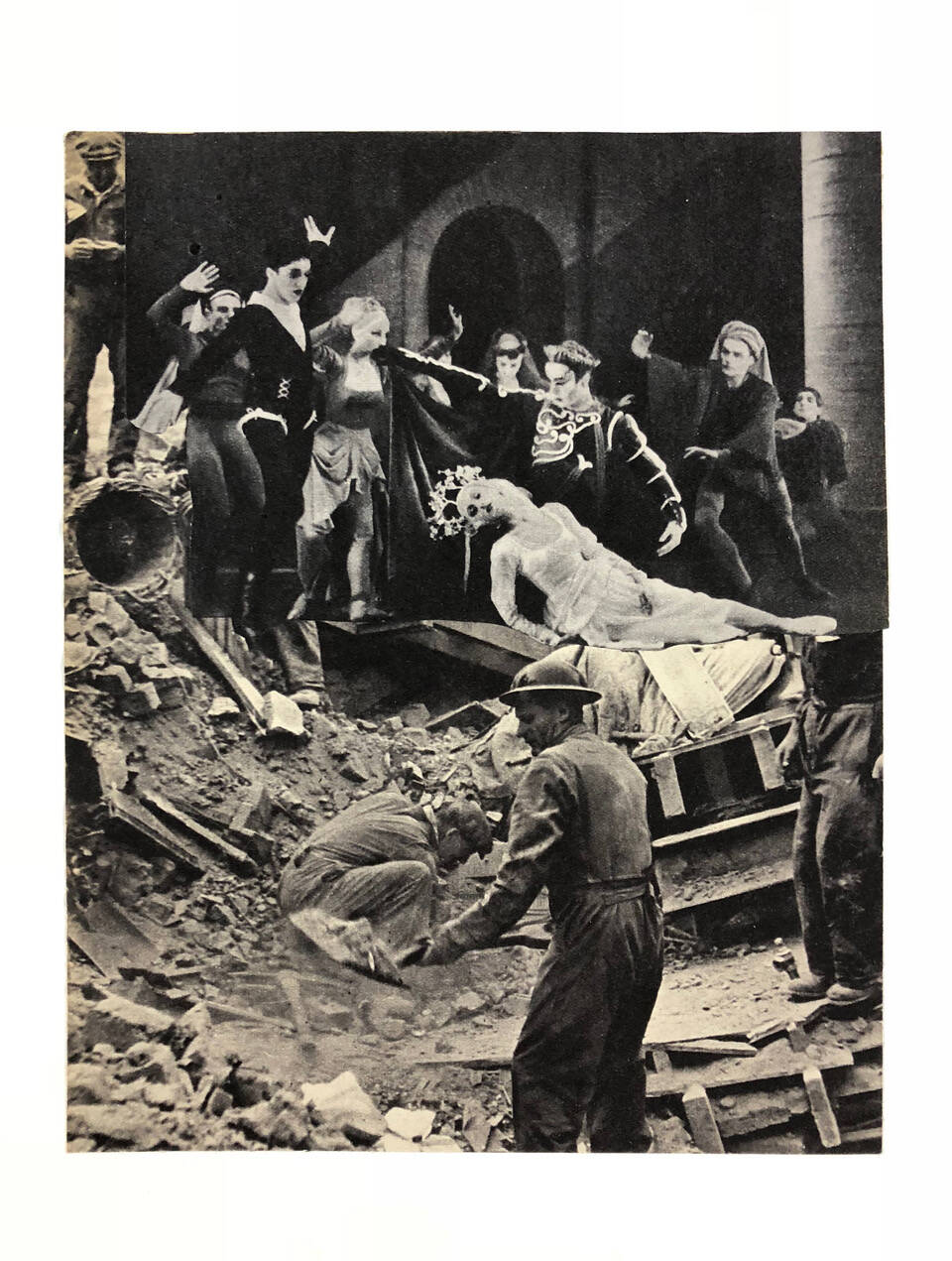 Untitled (HHR) #10 2018 Collaged WWII Picture Post magazines pages © Simon Moretti All rights reserved, DACS/Artimage 2022
Untitled (HHR) #10 2018 Collaged WWII Picture Post magazines pages © Simon Moretti All rights reserved, DACS/Artimage 2022
Is it wrong to think of collage as something ephemeral, or less durable? Does that concern or attract you? I disagree with the notion that collage is something ephemeral and less durable. Its longevity should not be a concern or a source of attraction - it should be seen as a testament to its versatility and strength as a medium.
What’s next for you and what do you think is next for collage? In addition to creating new works, I am also working on a number of large-scale exhibitions that incorporate other artists, found objects, and what I refer to as “expanded collage.” With the emergence of digital technology, I believe collage has become increasingly relevant in the way we interact with images on a daily basis—on computers, phones, and other screens. Collage has become a way for us to both distribute and absorb information, and I think it will only become more prominent as time goes on. Collage has certainly stood the test of time, and I believe it is the perfect medium for this moment in history.
You can see more of Moretti’s work via his website. Meanwhile, Vitamin C+ Collage in Contemporary Art, featuring over 100 artists including: Njideka Akunyili Crosby; Ellen Gallagher; Peter Kennard; Linder, Christian Marclay; Wangechi Mutu; Deborah Roberts; Martha Rosler; and Mickalene Thomas is available now in the store. We'll be running more interviews with artists featured in the book in the coming weeks.
